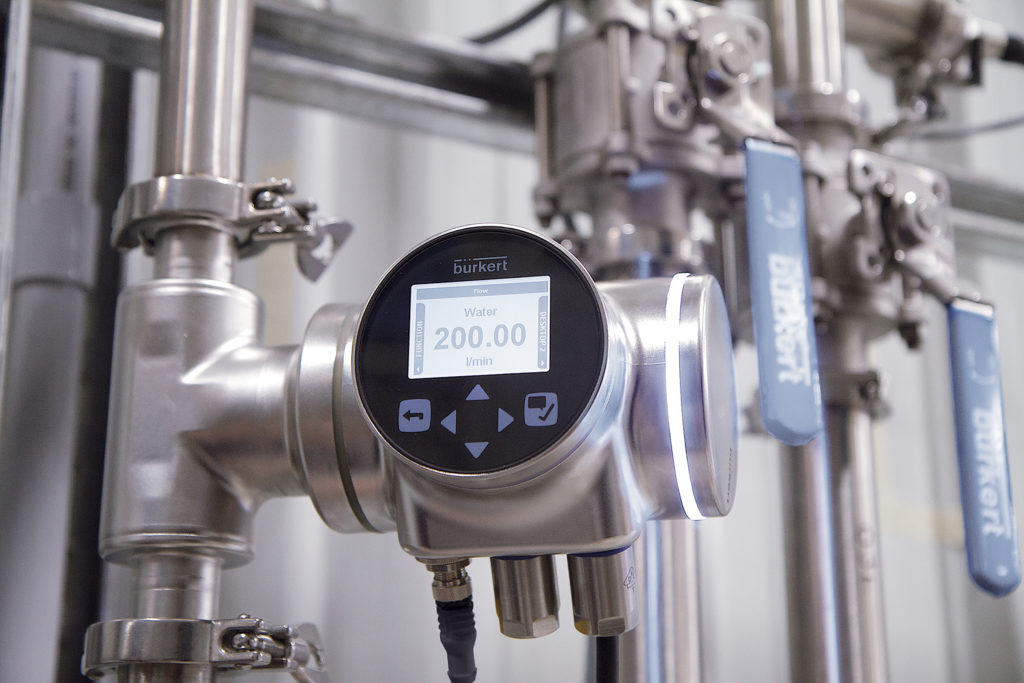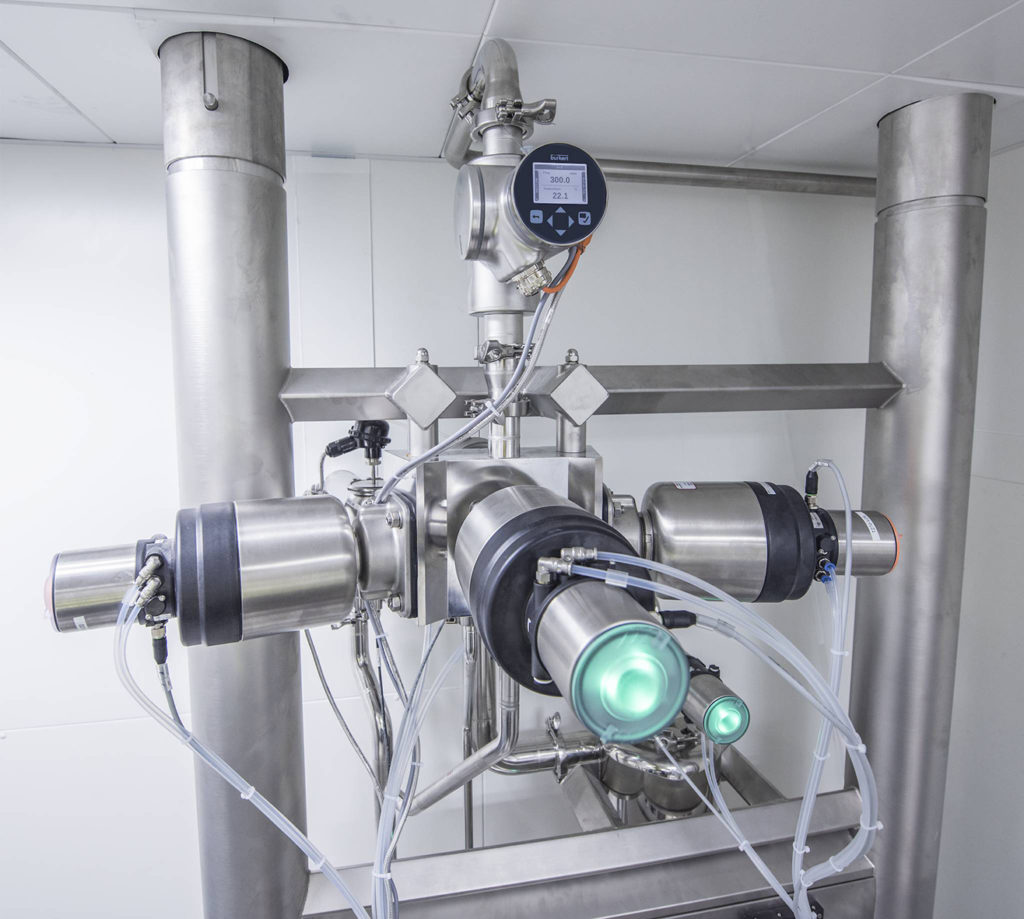Hygienic manufacturing focus on cleanliness and product quality, in some cases to the point where valuable product is disposed of in the process of ensuring the necessary standards are maintained.
For companies in the food and beverage sector to reduce waste, the challenge is to quickly and accurately identify different fluids in the process pipework, which can now be achieved at the same time as measuring flowrates.
Flowmeters come in all shapes and sizes and finding the most appropriate design for a particular application can be difficult.
However, for hygienic applications, the starting line-up will be considerably shorter because those that are difficult to clean or unable to withstand Clean in Place (CIP) procedures, will be ruled out.
Preventing contamination
In fact, these cleaning processes have a significant impact on many aspects of the design when it comes to selecting the most suitable components. CIP uses both heat and chemicals to remove scale, bacteria and debris from process vessels and pipework, which will often include a flowmeter.
Modern production facilities will be used to produce a range of products and manufacturers are faced with the challenge of ensuring that one product is not contaminated with another. In many cases this process is completed using a timer, so, when the first product run has finished, the lines and vessels are flushed and cleaned, with the output going to the drain.

The duration of the water/cleaning flush is a fixed period which guarantees that none of the previous product remains in the system. Then the next product to be manufactured starts to flow, and this also continues to drain for a further period, until it is certain that none of the water or cleaning solutions are in the line.
Improving productivity
To be sure there is no contamination, safety factors are built-in to these processes, which inevitably mean that a certain amount of cleaning fluid and saleable product are sent to the drain.
By offering a method of very accurately identifying the fluids and their flow volume in the pipework, Bürkert can deliver considerable cost savings as well as improving productivity for manufacturers.
The FLOWave flowmeter uses surface acoustic wave (SAW) technology to obtain a direct measurement of flow combined with temperature readings and interpretations for density (as a density factor), and an acoustic transmission factor, which gives an indication of bubbles, solids and viscosity.
Together, these parameters can be analysed to provide real-time indications of the contents of the pipework.

For hygienic applications, FLOWave is ideal, the smooth wall flow-through pipe design means there is no direct contact of any sensor components with the fluid. In addition, as a stainless steel tube, it can be manufactured to the same diameter and surface finish as the rest of the pipeline, meaning that, in terms of hygiene, cleaning and flow conditions, there is no difference to any other piece of straight pipe.
Reducing costs
This ground-breaking solution for flow measurement uses the combination of density factor and the acoustic transmission factor to accurately determine what fluids are in the system at a particular point – and to minimise the amount of saleable product that is sent to the drain as part of a safety margin.
Similarly, if a cleaning process is being used, savings in both time and materials can be made by having a clear indication when the process has been completed.
In real-world examples, operators have found that they not only save product that would have otherwise been wasted, but they also save considerable amounts of time. By reducing the total time attributed to a change-over, in some cases up to 50%, the productivity of the process is greatly improved. In addition, the reduction in the amount of fluids being sent to the drain also delivers savings in water treatment costs.
Widening applications
During the commissioning process of a FLOWave, the various fluids that will be experienced in the system are calibrated for acoustic transmission factor and density factor. This process can be fine-tuned, but essentially, while a mixture of fluids passes through the FLOWave, the values will be changing. Once it stabilises around the value set for one of the pure fluids a signal can be sent to change the valve position that directs fluids to drain or to packaging.
In addition, FLOWave can give an indication of the level of carbonation, in terms of a percentage, or the amount of fruit pulp in a juice, or the cocoa solids content of chocolate for example.
In fact, as more manufacturers take advantage of this revolutionary technology, an even wider range of applications becomes apparent.
For the food and beverage sector, the simple, physical design makes FLOWave easy to integrate into an existing installation and its control infrastructure. The ability to offer improved control systems that reduce waste, save time and maintain rigorous hygiene standards are distinct advantages for the industry.
 Engineer News Network The ultimate online news and information resource for today’s engineer
Engineer News Network The ultimate online news and information resource for today’s engineer





